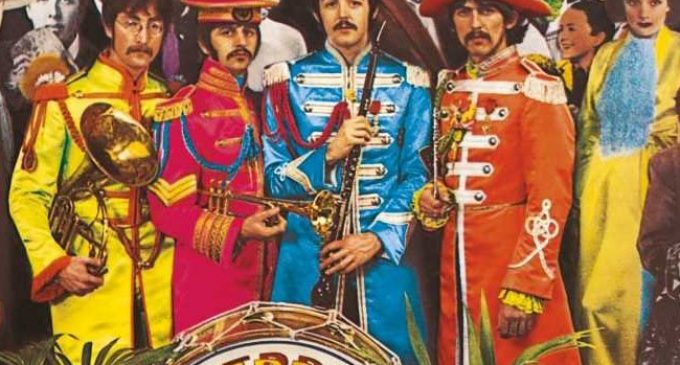Lost Chords, Major Chords, Minor Chords, Dissonant Counter-melodies: ‘Dreaming the Beatles’ | PopMatters

How we respond to the Beatles as entities in musical pop culture more likely than not depends on when we were born. Those of us born near the middle of the ‘60s, that decade when this musical force of nature put their concentrated stamp on the world, came of age with them in the ‘70s. We were finishing elementary school six years after their 1970 dissolution as the boy band group that blossomed into introspective intellectuals who unabashedly wore their influences on their sleeves. Through John, Paul, George, and Ringo, countless white suburbanites learned about the magic of Motown girl groups, about Smokey Robinson and the Miracles, and about the omnipresent power of Chuck Berry.We responded to the Beatles in the ‘70s not just because they were superior alternatives to pop fluff like The Bay City Rollers and Starland Vocal Band or dangerous rock theatrics from KISS, but also because they were all still very active (with varying degrees of success) through most of the decade. John Lennon retired from recording in 1975, re-surfaced in 1980 with a new album and a flurry of publicity only to be gunned down weeks later. The dream ended, the music died, and the merchandising and mythologizing went into overdrive.Veteran Rolling Stone journalist and music writer Rob Sheffield’s wistful, elegiac Dreaming the Beatles: The Love Story of One Band and the Whole World makes no pretense of objectifying the story, and telling it from the comfortable distance of time to create academic context. If we want to know how Lennon, Paul McCartney, George Harrison and Ringo Starr conspired to capture the national zeitgeist upon their first visit as a group to the United States in February 1964 for a performance on The Ed Sullivan Show, to their final dissolution as an artistic entity in early April 1970, accepting that means we’re comfortable with the received text.The idea is that the Beatles were the soothing balm that healed the nation less than 12 weeks after the assassination of President John F. Kennedy. It’s the usual place to start this narrative, but Sheffield doesn’t settle for convenience. He also notes that The Beverly Hillbillies, “… especially the quartet known as the Clampetts, did as much to comfort the country in the weeks between Kennedy’s murder and the arrival of the Beatles. The show featured the exploits of a painfully stupid backwoods country family that hit it rich after they struck oil. They moved to Beverly Hills, and the fun began as their primal basic new money culture clashed with the world of old money California.” For Sheffield, both the Beatles and the Clampetts were “…soothing fantasies that spoke to post JFK fantasies about the state of the nation.” He goes on to not so successfully extend the metaphor, assigning roles to each member that connected to a Beatle, but the argument is clear. The Clampetts appealed to our slapstick nature and our struggle to succeed without any effort, and the Beatles appealed to our dreams of unity.If the timeline of 9 February 1964 to 4 April 1970 is the easiest to follow, a paint-by-numbers account of the Beatles and their relationship with the United States, it’s not found in this book. The group had already been a recording entity for two years, and their trip to New York was really their final step in conquering the lucrative teen pop music marketplace. Basically, Sheffield’s thesis seems to be that while there might be a definitive beginning to the Lennon/McCartney relationship (a sort of hybrid brother and spouse union) that can be traced to July 1957, when they first met, there would be no ending.Sheffield is at his best when he elaborates on how their personality dynamics worked to serve as both a necessary elixir and an addictive poison in the creation of their music. In the chapter “A Toot and a Snore in ’74”, we meet John and Paul at a Burbank Recording Studio. They are in the midst of drug excess, cocaine and booze, and the results of their spontaneous jam session (heard for years through legendary bootlegs) are primary evidence that while the drugs might have enhanced creation and performance in 1966-1969, they were deadly in the next decade and a different context: “John and Paul spent so many years estranged—but the harder they tried to pull away to their opposite corners, the more they resembled each other.”Sheffield continues by elaborating on “Silly Love Songs”, the hit McCartney would have two years after this night in the Burbank studio. For Sheffield, and for those who were tuned into pop radio at the time, this was an anti-love song, a defense of exactly what the title contained. For Sheffield, McCartney’s “Silly Love Songs” of 1976 and Lennon’s “Revolution” of 1968 were “…in favor of love but squeamish about the details…” Lennon dabbled in protest pop with “Revolution” and other songs, to varying degrees of success. The radical chic sentiments were sometimes pedestrian and misguided, but they were heartfelt, like McCartney’s love songs.“‘Re




There are no comments at the moment, do you want to add one?
Write a comment